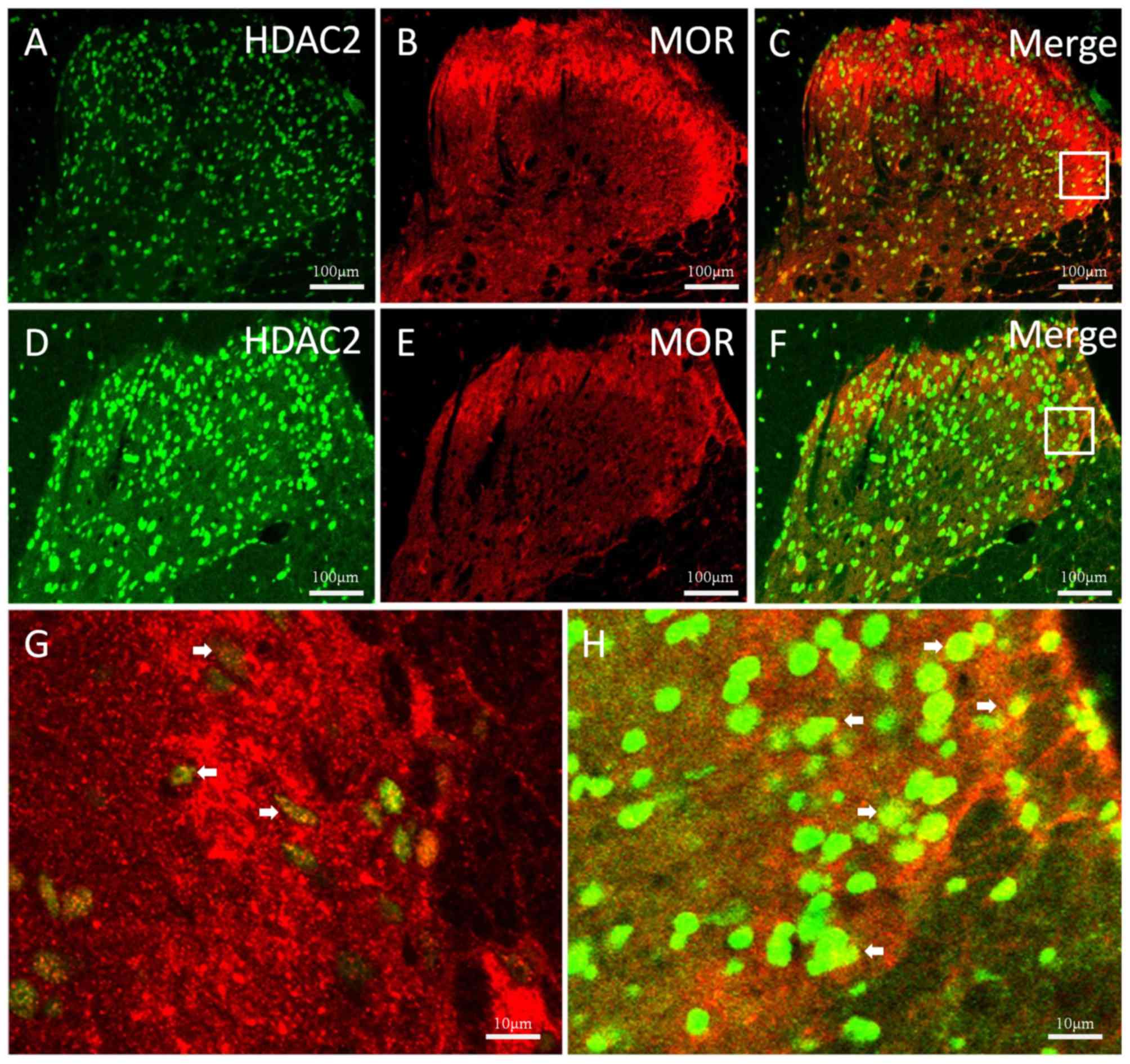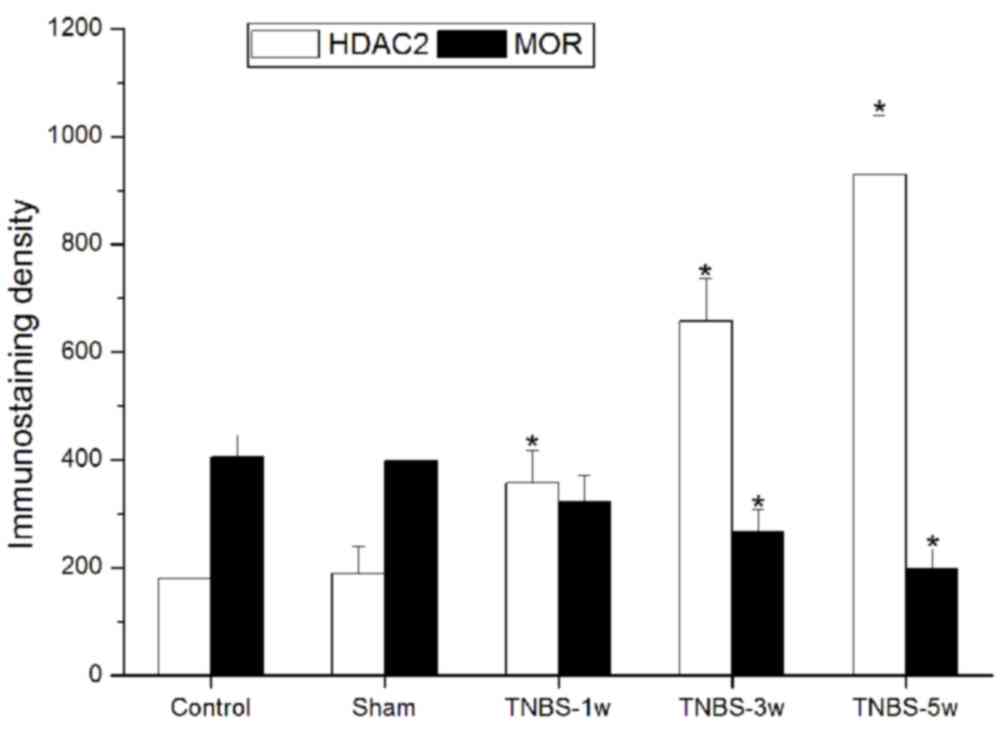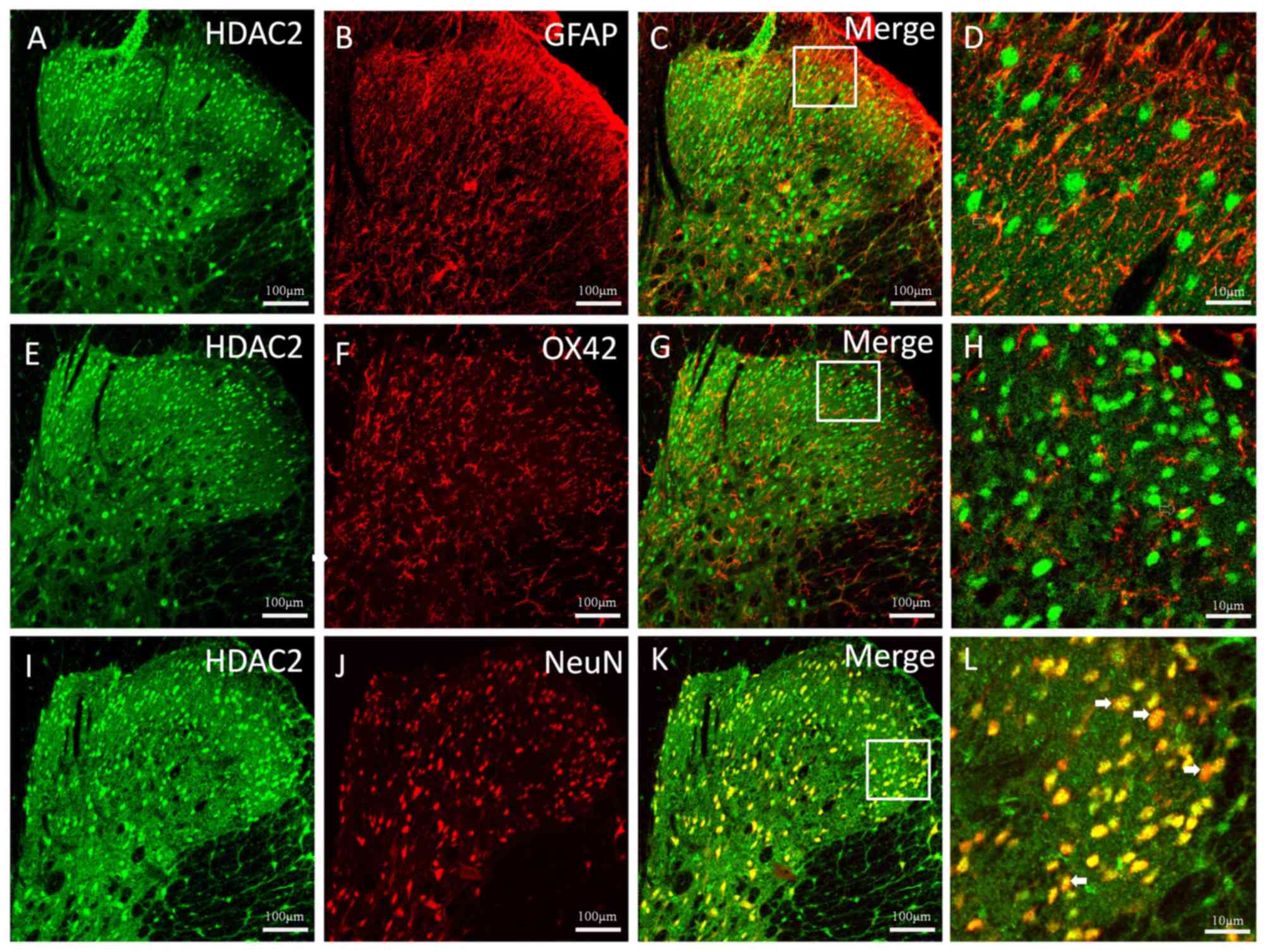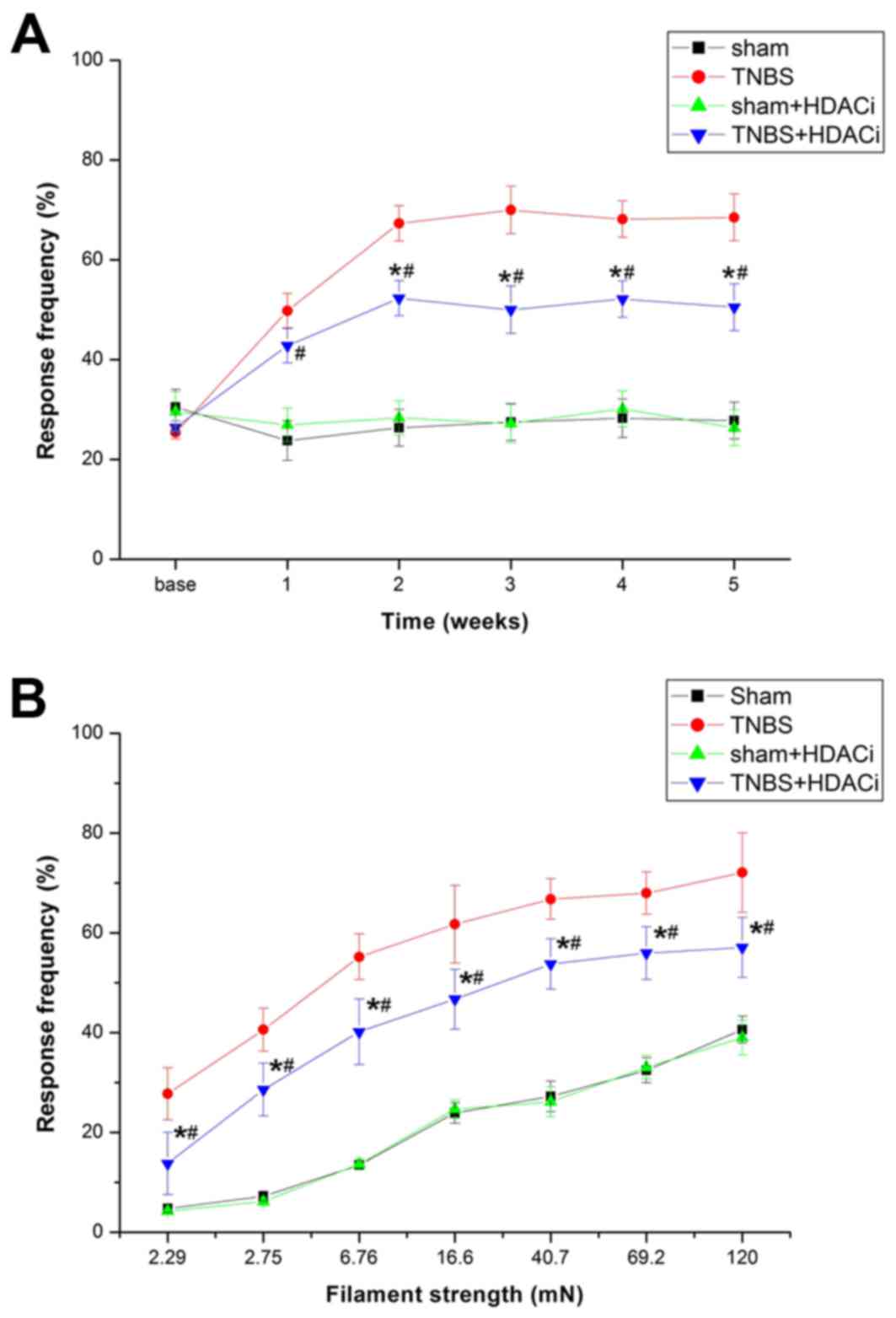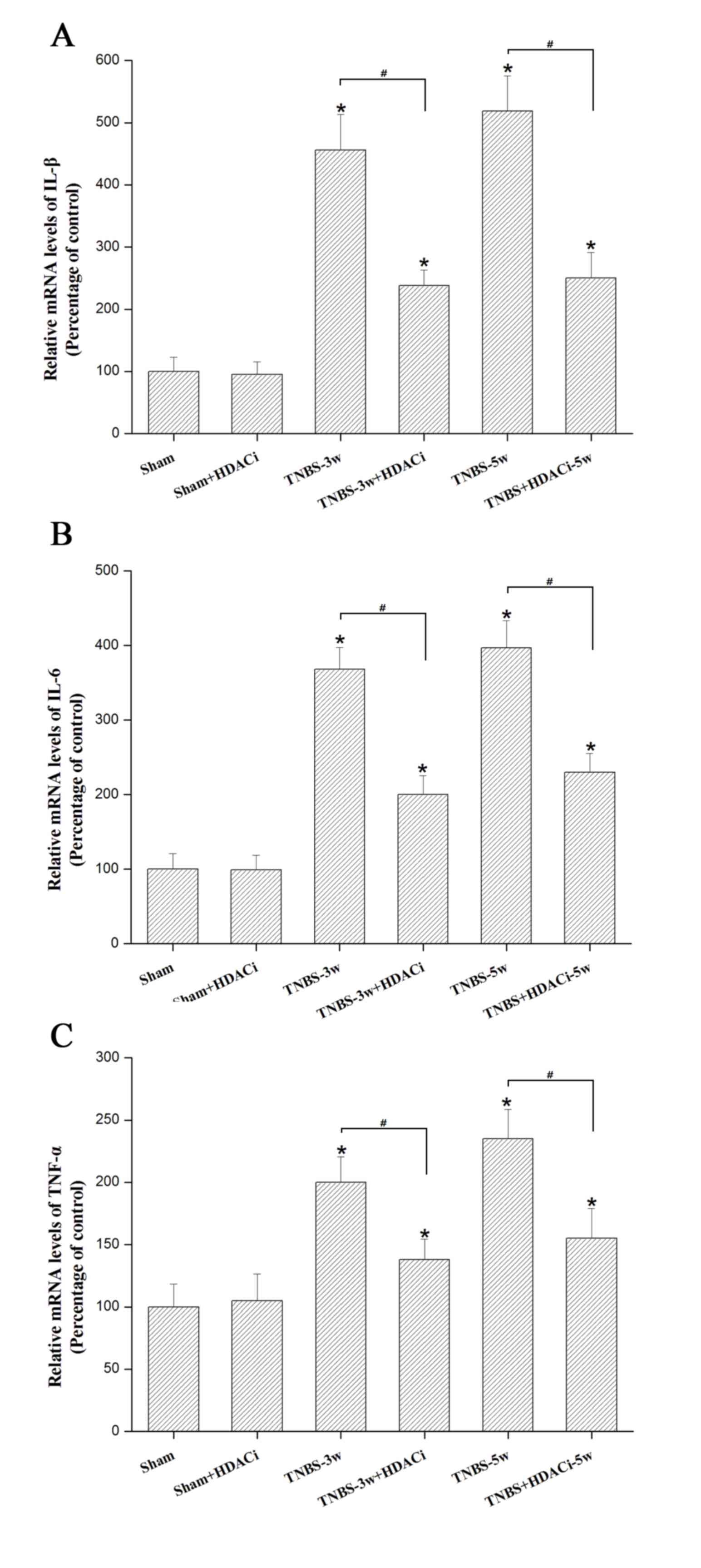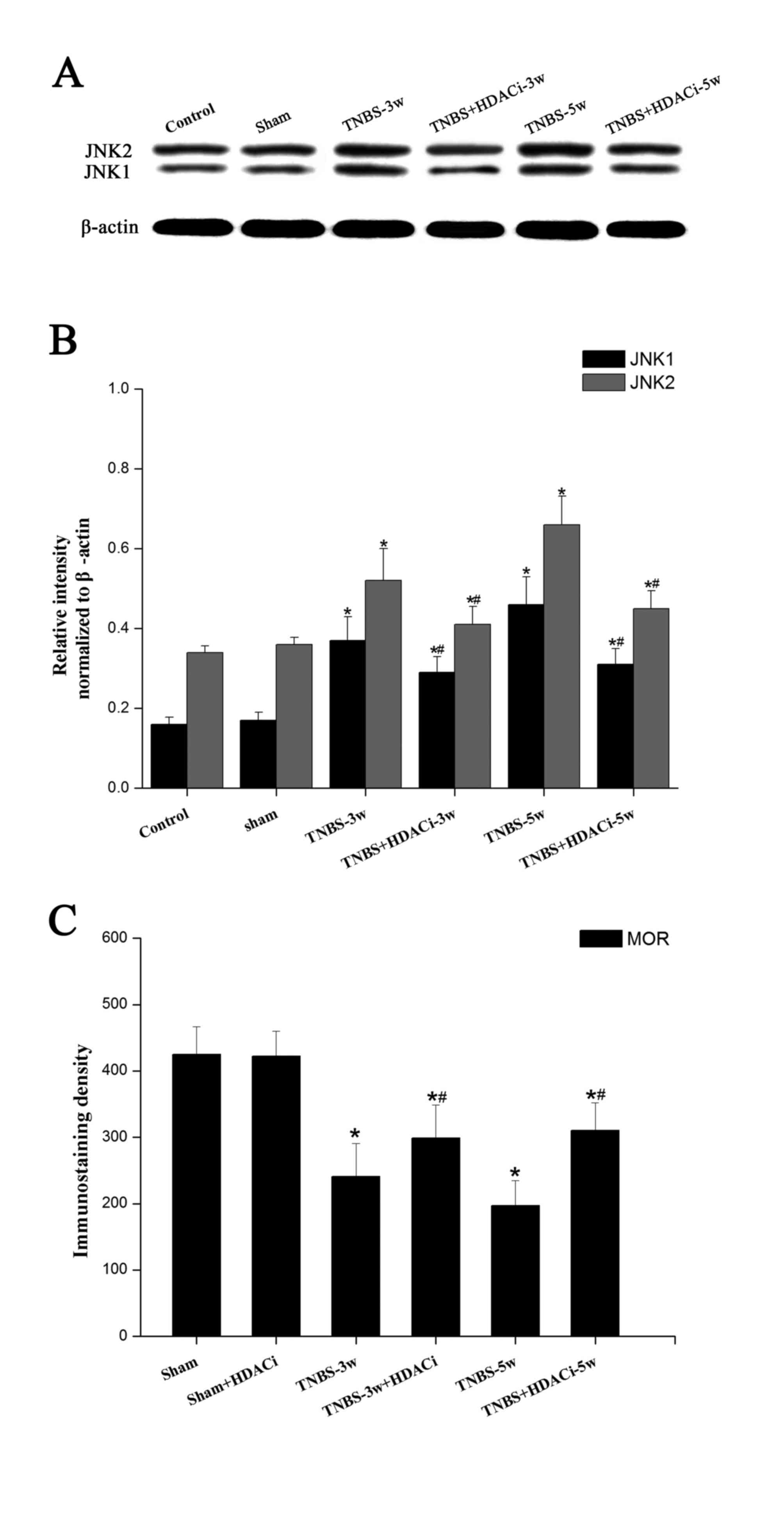|
1
|
Keefe MD, Wang H, De La OJP, Khan A, Firpo
MA and Murtaugh LC: β-catenin is selectively required for the
expansion and regeneration of mature pancreatic acinar cells in
mice. Dis Model Mech. 5:503–514. 2012. View Article : Google Scholar : PubMed/NCBI
|
|
2
|
Braganza JM, Lee SH, McCloy RF and McMahon
MJ: Chronic pancreatitis. Lancet. 377:1184–1197. 2011. View Article : Google Scholar : PubMed/NCBI
|
|
3
|
Olesen SS, Juel J, Graversen C, Kolesnikov
Y, Wilder-Smith OH and Drewes AM: Pharmacological pain management
in chronic pancreatitis. World J Gastroenterol. 19:7292–7301. 2013.
View Article : Google Scholar : PubMed/NCBI
|
|
4
|
Drewes AM, Krarup AL, Detlefsen S,
Malmstrøm ML, Dimcevski G and Funch-Jensen P: Pain in chronic
pancreatitis: The role of neuropathic pain mechanisms. Gut.
57:1616–1627. 2008. View Article : Google Scholar : PubMed/NCBI
|
|
5
|
Feng W, Teng R, Zhao Y, Gao J and Chu H:
Epigenetic modulation of Wnt signaling contributes to neuropathic
pain in rats. Mol Med Rep. 12:4727–4733. 2015. View Article : Google Scholar : PubMed/NCBI
|
|
6
|
Gáranton SM: Targeting epigenetic
mechanisms for pain relief. Curr Opin Pharmacol. 12:35–41. 2012.
View Article : Google Scholar : PubMed/NCBI
|
|
7
|
Lessans S and Dorsey SG: The role for
epigenetic modifications in pain and analgesia response. Nurs Res
Pract 2013. 9614932013.
|
|
8
|
Gilbert RE, Huang Q, Thai K, Advani SL,
Lee K, Yuen DA, Connelly KA and Advani A: Histone deacetylase
inhibition attenuates diabetes-associated kidney growth: Potential
role for epigenetic modification of the epidermal growth factor
receptor. Kidney Int. 79:1312–1321. 2011. View Article : Google Scholar : PubMed/NCBI
|
|
9
|
Capasso KE, Manners MT, Quershi RA, et al:
Effect of histone deacetylase inhibitor JNJ-26481585 in pain. J Mol
Neurosci. 55:570–578. 2015. View Article : Google Scholar : PubMed/NCBI
|
|
10
|
Bai G, Wei D, Zou S, Ren K and Dubner R:
Inhibition of class II histone deacetylases in the spinal cord
attenuates inflammatory hyperalgesia. Mol Pain. 6:512010.
View Article : Google Scholar : PubMed/NCBI
|
|
11
|
Chiechio S, Copani A, Zammataro M,
Battaglia G, Gereau RW IV and Nicoletti F: Transcriptional
regulation of type-2 metabotropic glutamate receptors: An
epigenetic path to novel treatments for chronic pain. Trends
Pharmacol Sci. 31:153–160. 2010. View Article : Google Scholar : PubMed/NCBI
|
|
12
|
Chiechio S, Zammataro M, Morales ME,
Busceti CL, Drago F, Gereau RW IV, Copani A and Nicoletti F:
Epigenetic modulation of mGlu2 receptors by histone deacetylase
inhibitors in the treatment of inflammatory pain. Mol Pharmacol.
75:1014–1020. 2009. View Article : Google Scholar : PubMed/NCBI
|
|
13
|
Zhang Z, Cai YQ, Zou F, Bie B and Pan ZZ:
Epigenetic suppression of GAD65 expression mediates persistent
pain. Nat Med. 17:1448–1455. 2011. View
Article : Google Scholar : PubMed/NCBI
|
|
14
|
Harrison C: Analgesia: Unravelling
epigenetic mechanisms of chronic pain. Nat Rev Drug Discov.
10:9002011.PubMed/NCBI
|
|
15
|
Jamil MF, Subki MF, Lan TM, Majid MI and
Adenan MI: The effect of mitragynine on cAMP formation and mRNA
expression of mu-opioid receptors mediated by chronic morphine
treatment in SK-N-SH neuroblastoma cell. J Ethnopharmacol.
148:135–143. 2013. View Article : Google Scholar : PubMed/NCBI
|
|
16
|
Hwang CK, Kim CS, Kim DK, Law PY, Wei LN
and Loh HH: Up-regulation of the mu-opioid receptor gene is
mediated through chromatin remodeling and transcriptional factors
in differentiated neuronal cells. Mol Pharmacol. 78:58–68. 2010.
View Article : Google Scholar : PubMed/NCBI
|
|
17
|
Wagley Y, Hwang CK, Lin HY, Kam AF, Law
PY, Loh HH and Wei LN: Inhibition of c-Jun NH2-terminal kinase
stimulates mu opioid receptor expression via p38 MAPK-mediated
nuclear NF-κB activation in neuronal and non-neuronal cells.
Biochim Biophys Acta. 1833:1476–1488. 2013. View Article : Google Scholar : PubMed/NCBI
|
|
18
|
Qian NS, Liao YH, Feng QX, Tang Y, Dou KF
and Tao KS: Spinal toll like receptor 3 is involved in chronic
pancreatitis-induced mechanical allodynia of rat. Mol Pain.
7:152011. View Article : Google Scholar : PubMed/NCBI
|
|
19
|
Ravillah D, Mohammed A, Qian L, Brewer M,
Zhang Y, Biddick L, Steele VE and Rao CV: Chemopreventive effects
of an HDAC2-selective inhibitor on rat colon carcinogenesis and
APCmin/+ mouse intestinal tumorigenesis. J Pharmacol Exp Ther.
348:59–68. 2014. View Article : Google Scholar : PubMed/NCBI
|
|
20
|
Livak KJ and Schmittgen TD: Analysis of
relative gene expression data using real-time quantitative PCR and
the 2(-Delta Delta C(T)) Method. Methods. 25:402–408. 2001.
View Article : Google Scholar : PubMed/NCBI
|
|
21
|
Denk F and McMahon SB: Chronic pain:
Emerging evidence for the involvement of epigenetics. Neuron.
73:435–444. 2012. View Article : Google Scholar : PubMed/NCBI
|
|
22
|
Haggarty SJ and Tsai LH: Probing the role
of HDACs and mechanisms of chromatin-mediated neuroplasticity.
Neurobiol Learn Mem. 96:41–52. 2011. View Article : Google Scholar : PubMed/NCBI
|
|
23
|
Dietz KC and Casaccia P: HDAC inhibitors
and neurodegeneration: At the edge between protection and damage.
Pharmacol Res. 62:11–17. 2010. View Article : Google Scholar : PubMed/NCBI
|
|
24
|
Hashioka S, Klegeris A and McGeer PL: The
histone deacetylase inhibitor suberoylanilide hydroxamic acid
attenuates human astrocyte neurotoxicity induced by interferon-γ. J
Neuroinflammation. 9:1132012. View Article : Google Scholar : PubMed/NCBI
|
|
25
|
Suh HS, Choi S, Khattar P, Choi N and Lee
SC: Histone deacetylase inhibitors suppress the expression of
inflammatory and innate immune response genes in human microglia
and astrocytes. J Neuroimmune Pharmacol. 5:521–532. 2010.
View Article : Google Scholar : PubMed/NCBI
|
|
26
|
Liu PY, Lu CL, Wang CC, Lee IH, Hsieh JC,
Chen CC, Lee HF, Lin HC, Chang FY and Lee SD: Spinal microglia
initiate and maintain hyperalgesia in a rat model of chronic
pancreatitis. Gastroenterology. 142:165–173.e2. 2012. View Article : Google Scholar : PubMed/NCBI
|
|
27
|
Cheng H, Xie Z, Jones WP, Wei XT, Liu Z,
Wang D, Kulp SK, Wang J, Coss CC, Chen CS, et al: Preclinical
pharmacokinetics study of R- and S-enantiomers of the histone
deacetylase inhibitor, AR-42 (NSC 731438), in rodents. AAPS J.
18:737–745. 2016. View Article : Google Scholar : PubMed/NCBI
|
|
28
|
Shakespear MR, Halili MA, Irvine KM,
Fairlie DP and Sweet MJ: Histone deacetylases as regulators of
inflammation and immunity. Trends Immunol. 32:335–343. 2011.
View Article : Google Scholar : PubMed/NCBI
|
|
29
|
Xu Y, Wang D, Zhuang Z, Jin K, Zheng L,
Yang Q and Guo K: Hypericin-mediated photodynamic therapy induces
apoptosis in K562 human leukemia cells through JNK pathway
modulation. Mol Med Rep. 12:6475–6482. 2015. View Article : Google Scholar : PubMed/NCBI
|
|
30
|
Herrmann JL, Weil BR, Abarbanell AM, Wang
Y, Poynter JA, Manukyan MC and Meldrum DR: IL-6 and TGF-α
costimulate mesenchymal stem cell vascular endothelial growth
factor production by ERK-, JNK-, and PI3K-mediated mechanisms.
Shock. 35:512–516. 2011. View Article : Google Scholar : PubMed/NCBI
|
|
31
|
Lu ZY, Chen WC, Li YH, Li L, Zhang H, Pang
Y, Xiao ZF, Xiao HW and Xiao Y: TNF-α enhances vascular cell
adhesion molecule-1 expression in human bone marrow mesenchymal
stem cells via the NF-κB, ERK and JNK signaling pathways. Mol Med
Rep. 14:643–648. 2016. View Article : Google Scholar : PubMed/NCBI
|
|
32
|
Liang R, Zhang W and Song YM: Levels of
leptin and IL-6 in lungs and blood are associated with the severity
of chronic obstructive pulmonary disease in patients and rat
models. Mol Med Rep. 7:1470–1476. 2013. View Article : Google Scholar : PubMed/NCBI
|
|
33
|
Kim DK, Hwang CK, Wagley Y, Law PY, Wei LN
and Loh HH: p38 mitogen-activated protein kinase and PI3-kinase are
involved in up-regulation of mu opioid receptor transcription
induced by cycloheximide. J Neurochem. 116:1077–1087. 2011.
View Article : Google Scholar : PubMed/NCBI
|
|
34
|
Bian JM, Wu N, Su RB and Li J:
Phosphatidylethanolamine-binding protein is not involved in
µ-opioid receptor-mediated regulation of extracellular
signal-regulated kinase. Mol Med Rep. 11:3368–3374. 2015.
View Article : Google Scholar : PubMed/NCBI
|
|
35
|
Zhang ZY and Schluesener HJ: HDAC
inhibitor MS-275 attenuates the inflammatory reaction in rat
experimental autoimmune prostatitis. Prostate. 72:90–99. 2012.
View Article : Google Scholar : PubMed/NCBI
|
|
36
|
Zhang B, West EJ, Van KC, Gurkoff GG, Zhou
J, Zhang XM, Kozikowski AP and Lyeth BG: HDAC inhibitor increases
histone H3 acetylation and reduces microglia inflammatory response
following traumatic brain injury in rats. Brain Res. 1226:181–191.
2008. View Article : Google Scholar : PubMed/NCBI
|
|
37
|
Zhang S, Suvannasankha A, Crean CD, White
VL, Chen CS and Farag SS: The novel histone deacetylase inhibitor,
AR-42, inhibits gp130/Stat3 pathway and induces apoptosis and cell
cycle arrest in multiple myeloma cells. Int J Cancer. 129:204–213.
2011. View Article : Google Scholar : PubMed/NCBI
|
|
38
|
Lucas DM, Alinari L, West DA, Davis ME,
Edwards RB, Johnson AJ, Blum KA, Hofmeister CC, Freitas MA, Parthun
MR, et al: The novel deacetylase inhibitor AR-42 demonstrates
pre-clinical activity in B-cell malignancies in vitro and in vivo.
PLoS One. 5:e109412010. View Article : Google Scholar : PubMed/NCBI
|
|
39
|
Ji RR: Neuroimmune interactions in itch:
Do chronic itch, chronic pain, and chronic cough share similar
mechanisms? Pulm Pharmacol Ther. 35:81–86. 2015. View Article : Google Scholar : PubMed/NCBI
|



